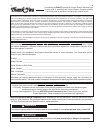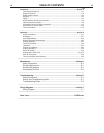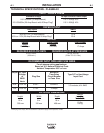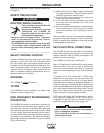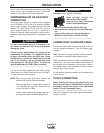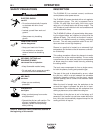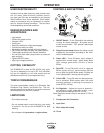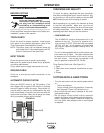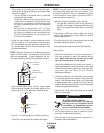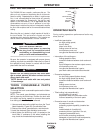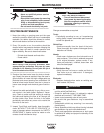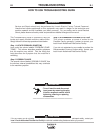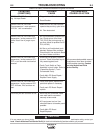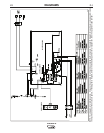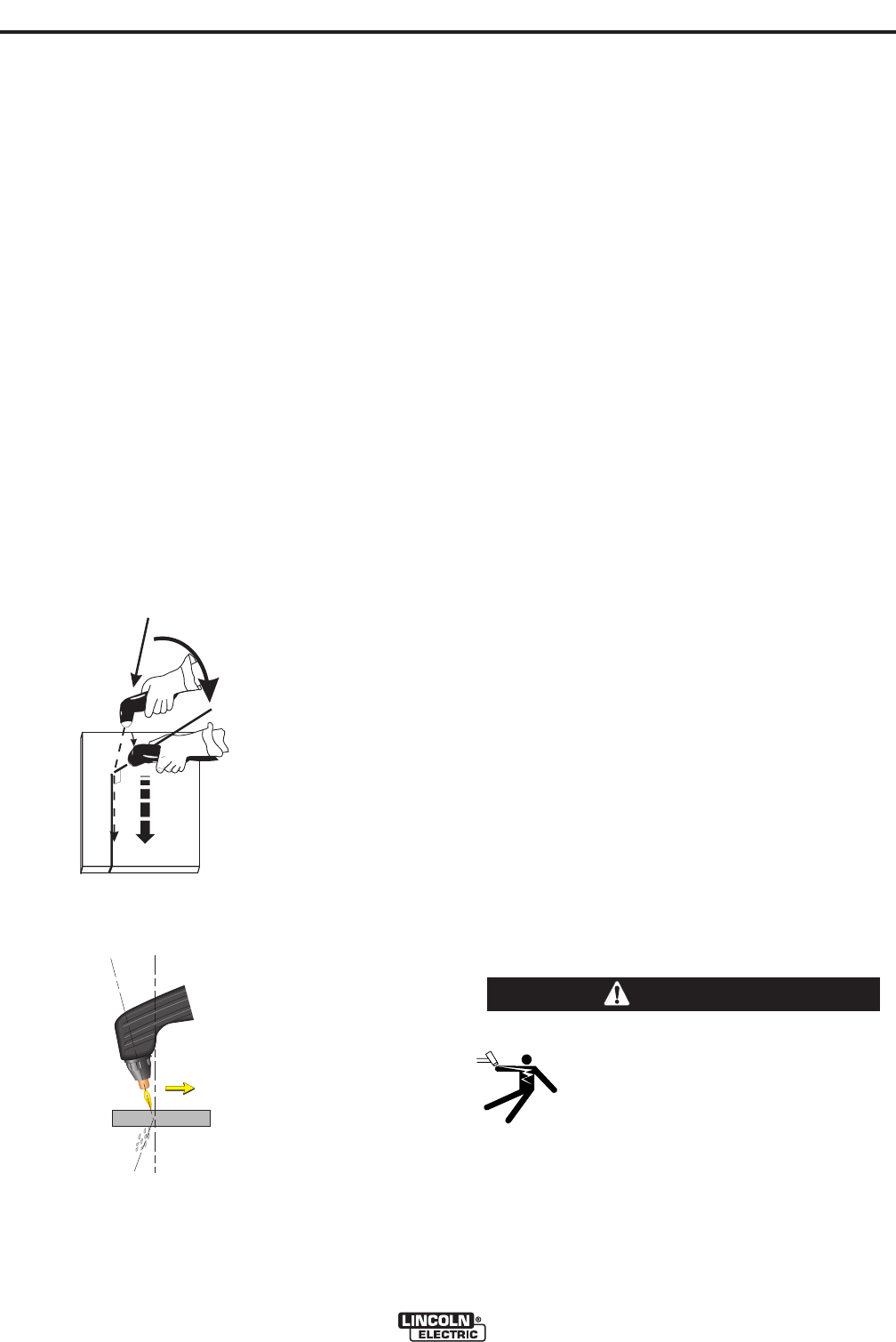
B-4
OPERATION
B-4
NOTE: For better torch control, it is acceptable to let
the nozzle drag along the work piece surface. This
will shorten nozzle life. Also, it is acceptable to place
a non-conductive torch guide on the work piece in
order to achieve a cleaner cut
• When the trigger is released, the arc will stop.
- The gas will continue to flow for 20 seconds of
postflow. If the trigger is activated within this time
period, the pilot arc will restart after the 3 second
delay.
• If the dross is difficult to remove, reduce the cutting
speed. High speed dross is more difficult to remove
than low speed dross.
• The right side of the cut is more square than the left
as viewed along the direction of travel.
• Clean spatter and scale from the nozzle frequently.
Parts in place:
• Check the assembly of the torch consumables. If
they are not properly in place, the machine will not
start. Make sure that the shield cup is hand
tight. Do not use pliers or over tighten.
• Check the conditions of the inside of the nozzle. If
debris has collected, rub the electrode on the inside
bottom of the nozzle to remove any oxide layer that
may have built up. Refer to the “Routine
Maintenance Section".
• Check the condition of the electrode. If the end has
a crater-like appearance, replace it along with the
nozzle. The maximum wear depth of the electrode
is approximately .062”. A green and erratic arc will
indicate definite electrode failure and the electrode
should be replaced immediately.
• Replace the nozzle when the orifice exit is eroded
away or oval shaped.
ELECTRIC SHOCK CAN KILL.
Disconnect input power by removing
the plug from the receptacle before
assembling or disassembling torch
parts, or torch and lead assemblies.
------------------------------------------------------------------------
• If the machine does not reset or continues to trip,
consult the Troubleshooting Section.
• Use the proper cutting procedures referred to in
Procedure Recommendations.
PLASMA 20
• When ready to cut, place the torch near the work,
make certain all safety precautions have been taken
and pull the trigger.
- The air will flow for a preflow time of 3 seconds
and the pilot arc will start.
- The pilot arc will run for 3.0 seconds and shut off
unless the arc is brought in contact with the work
and the arc is transferred. Avoid excessive pilot
arc time by transferring the arc to the workpiece
quickly.
- When the arc is brought within 1/8” - 1/4" from
the work piece: the arc will transfer, the current
will ramp to the setting on the control panel, and
the cut can last indefinitely (or until the duty cycle
of the unit is exceeded).
• Pierce the work piece by slowly lowering the torch
onto the metal at a 30
0
angle away from the opera-
tor. This will blow the dross away from the torch noz-
zle. Slowly rotate the torch to vertical position as the
arc becomes deeper.
NOTE: Graphics shown are for understanding torch
angles for best results – the distances from the work
piece are exaggerated. In actual operation, the noz-
zle should be held just above the work piece surface.
• Keep moving while cutting. Cut at a steady speed
without pausing. Maintain the cutting speed so that
the arc lag is 10° to 20° behind the travel direction.
•
Use a 5° - 15° leading angle in the direction of the cut.
• Finish the cut to be made and release the trigger.
3030
0
0
VERVERTICAL ANGLETICAL ANGLE
FOR CUTTINGFOR CUTTING
CUT
90
0
TORCH AT 30
0
ANGLE
TO PIERCE
ROTATE TO
90
0
ANGLE TO CUT
Direction of Travel
5° - 15°
10° - 20°
Arc Lag
Leading Angle
WARNING



